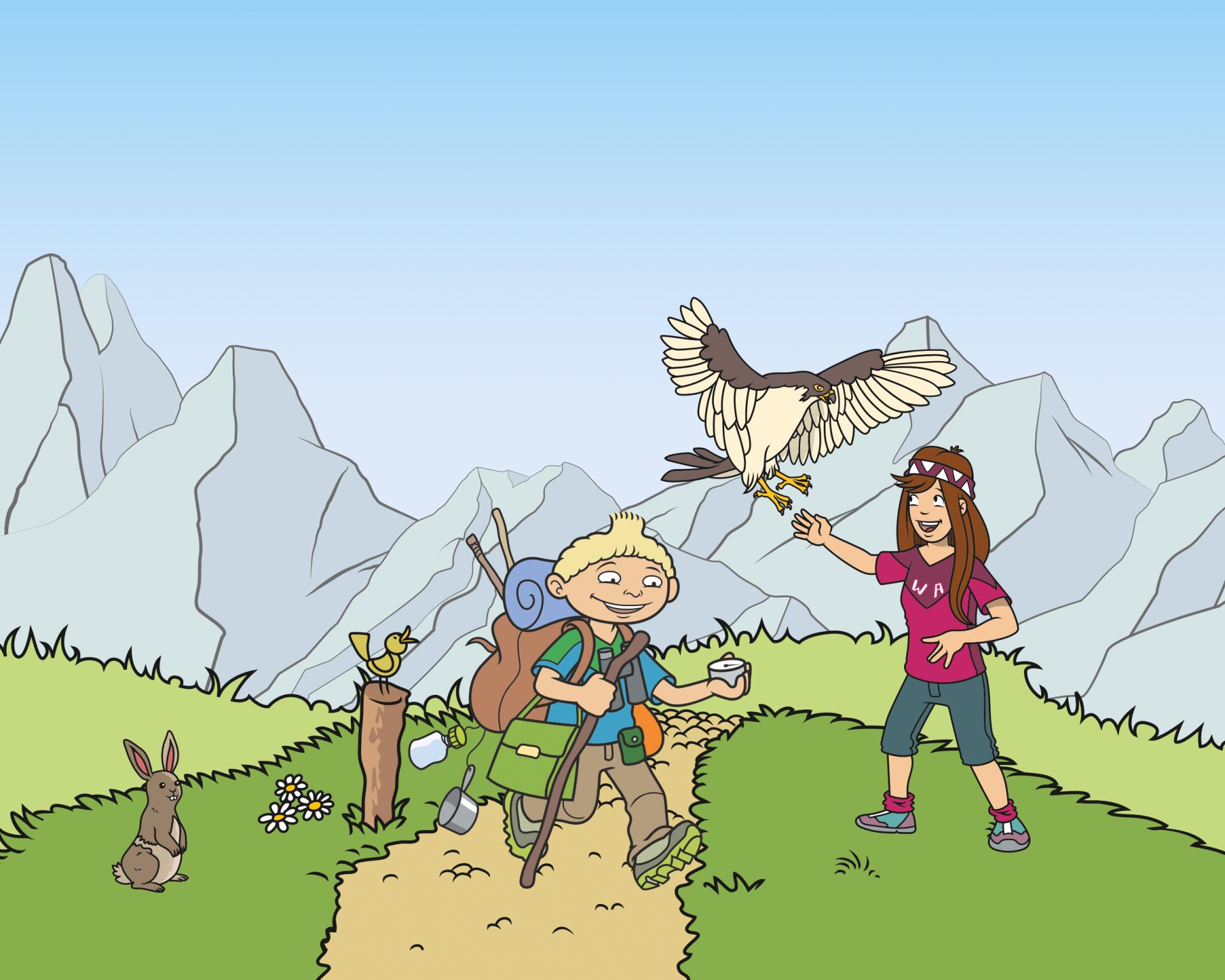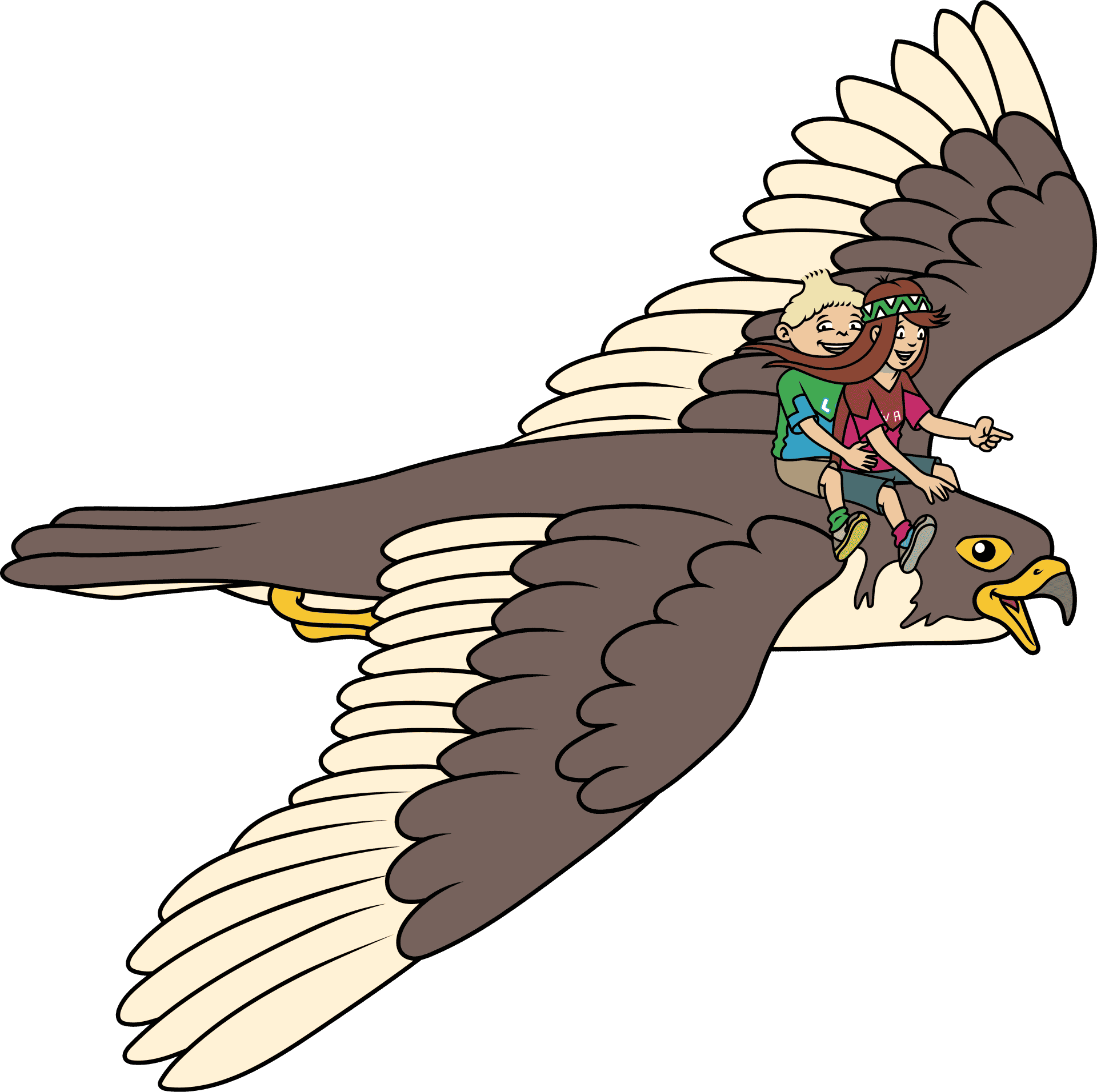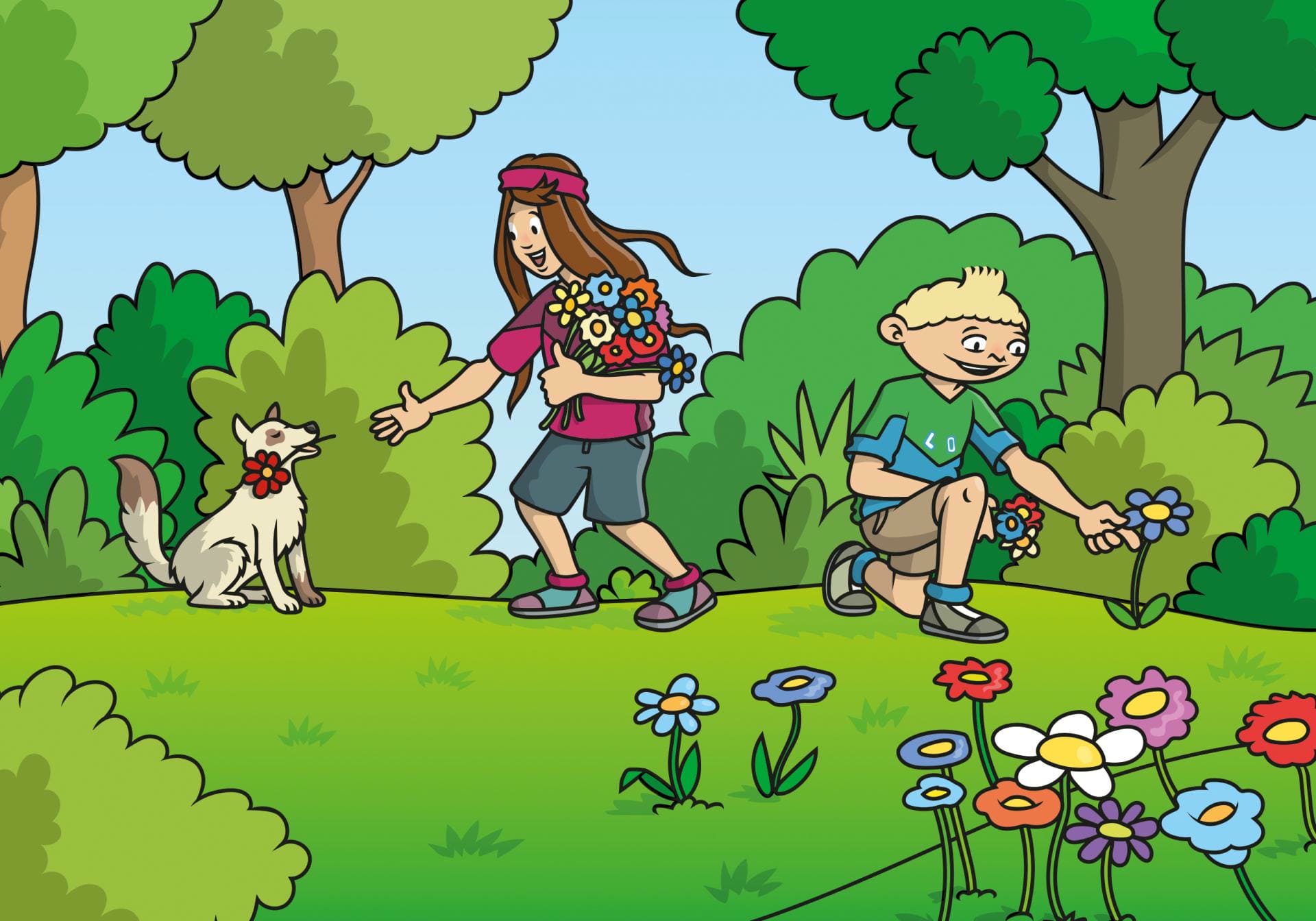Hello, my name is LOWINGO - I'm a peregrine falcon! Together with my friends LO & WA - the mascots of shoe manufacturer LOWA - I travel all over the world and visit all kinds of places with them. Thanks to my flying skills, we travel from A to B at lightning speed.
Protecting the peregrine falcon
The peregrine falcon doesn't actually need much to be happy: Sufficient food and a quiet and safe place to breed. These are usually rocky outcrops, but if these are not available, it sometimes breeds on skyscrapers or in tree hollows, as in North America or Australia. Otherwise, they also look for one or two raptor nests. This is a kind of nest in which birds of prey raise their young. Because the peregrine falcon is so frugal, it is at home almost everywhere in the world. It only leaves out Antarctica, Iceland, the Caribbean islands and New Zealand. This makes it the most widespread bird in the world. Actually ideal conditions for a carefree life. Right?
Unfortunately not! The peregrine falcon population - i.e. the number of peregrine falcon species - suddenly declined worldwide from the 1970s to the early 1980s. Why? There are several reasons for this. Experts believe that three of these reasons were primarily responsible for the extinction of the species.
-
Peregrine falcons are bird hunters and there are not many birds that are not on their menu from time to time. In Central Europe, crows, thrushes and pigeons are among the most common prey. This gave the peregrine falcon a very bad reputation, especially among pigeon breeders. In order to protect their own animals, the hunters themselves were hunted or the nest was plundered.
-
Hunters also plundered the nests of peregrine falcons. However, their aim was different: they wanted to raise and train the young and use the peregrine falcons as hunting aids for their own hunting of feathered or other wild animals.
-
The most dangerous threat to the peregrine falcon population, however, was certain pesticides used in agriculture to deter insects from eating the plants. As you know, peregrine falcons eat birds. Especially birds that eat insects. So the peregrine falcons ate poisoned birds as food and poisoned themselves. One consequence of this poisoning was that the eggs had a very thin shell and broke very quickly during incubation. As peregrine falcons only breed once a year, the number of living peregrine falcons became noticeably smaller.
Until the end of the 1970s, there was not a single peregrine falcon left in Denmark, Poland, the Netherlands, Belgium, Luxembourg and the former GDR. They were therefore considered extinct there. In Scandinavia, the Federal Republic of Germany, Switzerland and Austria, there were only very few pairs left. There were also no more peregrine falcons east of the Rocky Mountains in the USA.
It was only with the banning of these special pesticides, the intensive protection of breeding sites, some of which were guarded during the breeding season, and numerous reintroduction programmes that the population was able to recover at the end of the 1970s and beginning of the 1980s. Today, the peregrine falcon once again lives almost everywhere it did before the so-called "pesticide story". The species is now considered stable and is no longer on the Red List of endangered animal and plant species. Nevertheless, the species is still strictly protected. After all, it should not be on the brink of extinction again.
LOWINGO
LOWA supports the species conservation projects of the WWF, the "World Wide Fund for Nature", with the sale of the fluffy LOWINGO peregrine falcon. Nature conservation, the preservation of habitats and the conservation of wild animal and plant species are the core topics of the nature conservation organisation, which is one of the largest in the world. The WWF has been active for over 50 years and is now active in more than 100 countries. The nature conservation organisation is currently carrying out a total of 1300 projects for the preservation of biological diversity. The aim of the WWF is to stop the global destruction of nature and the environment and to create a future in which people and nature can live together in harmony.




